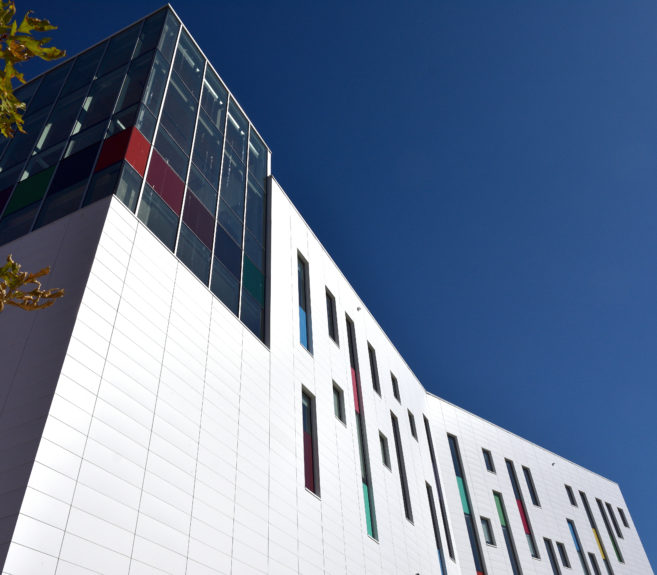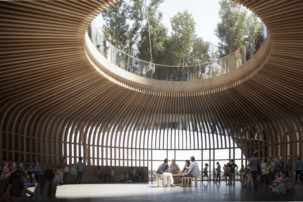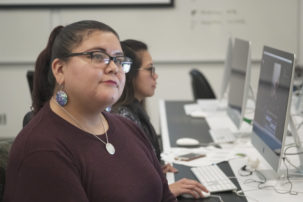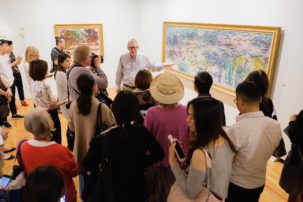After 16 years of planning, $122.6 million in fundraising and financing, and the completion of 289,730 square feet of building construction, the new Emily Carr University of Art and Design campus finally opens its doors to the public today in Vancouver’s Flats district.
And while some might feel nostalgic about the school’s old location on Granville Island—where, until recently, ECUAD had made its home for some 30 years—university president Ron Burnett has a reality check for that.
“When it rained, it rained inside and outside” of one of those old ECUAD buildings on Granville Island, Burnett says. “It’s in need of very serious renovations.”
Further, one of the old ECUAD buildings was repurposed from a ship-building facility—whereas the new Flats campus is specially built from the ground up as an art school.
“What makes it special is it is a purpose-built facility designed around the specs developed by the entire community for what would work best for art, media and design in the 21st century,” Burnett says.
He believes the 1,800 full-time students of the university—some of whom are having their orientation in the new building today—stand to benefit.
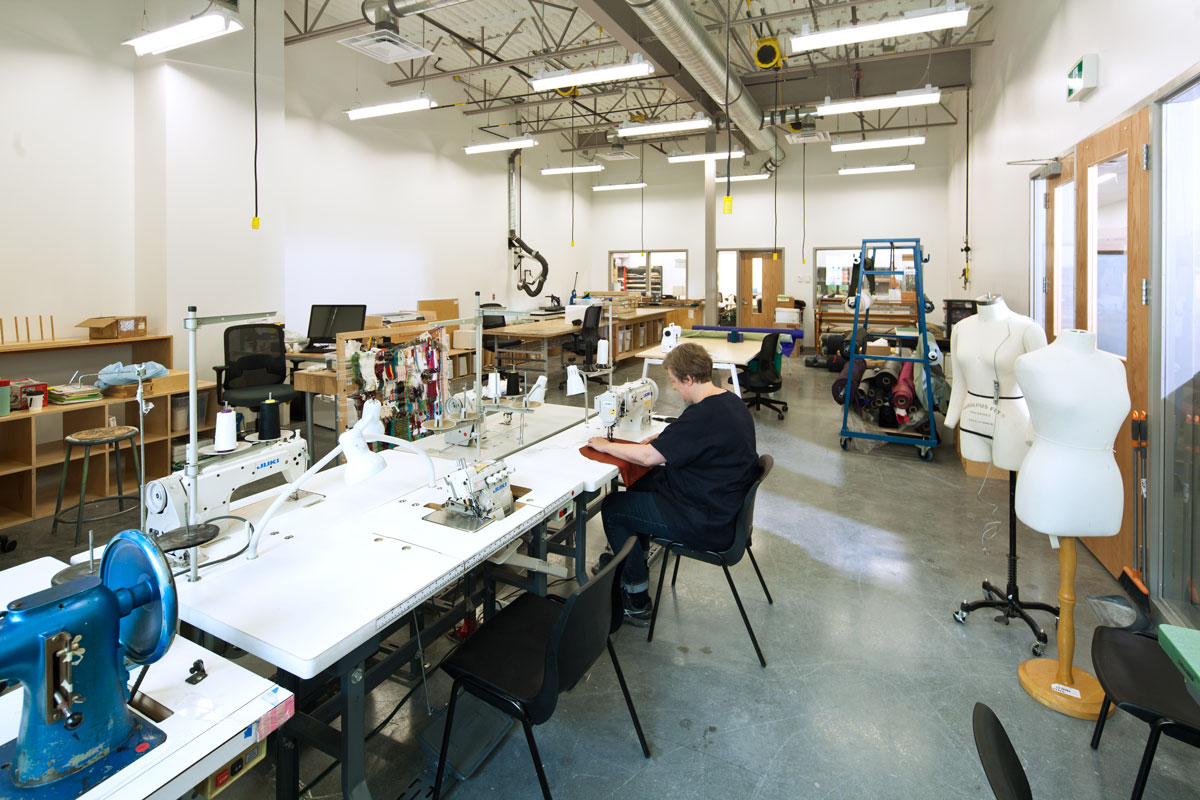 The new Soft Shop (Sewing and Textile Lab) at the Emily Carr University of Art and Design.
The new Soft Shop (Sewing and Textile Lab) at the Emily Carr University of Art and Design.
Two of ECUAD’s faculty members—painters Landon Mackenzie and Ben Reeves—even had an influence on the overall look of the structure. Together, they created a palette of 15 colours to reflect and honour the work of university namesake and BC artist Emily Carr.
Canadian firm Diamond Schmitt Architects then incorporated these artist-picked colours into the exterior of the four-storey building.
“It reflects the spirit of the community that helped design it,” says Burnett of the new campus.
Digital and analog are also “not in opposition to each other” in the new setup, says Burnett—for example a traditional ceramics studio is situated adjacent to a 3-D printing lab.
Other facilities in the new building include an Aboriginal Gathering Place, which a release states contains elements “in the architectural tradition of the Coast Salish longhouse” and is due to host art exhibitions, workshops, seminars, celebrations, studio projects and feasts. (Two Indigenous alumni of the school, Xwalacktun and Edwin Neel, also carved doors for the entrance of the university’s largest lecture theatre.)
The Libby Leshgold Gallery (formerly the Charles H. Scott Gallery) is ECUAD’s new contemporary-art space, with its inaugural exhibition due to open October 21.
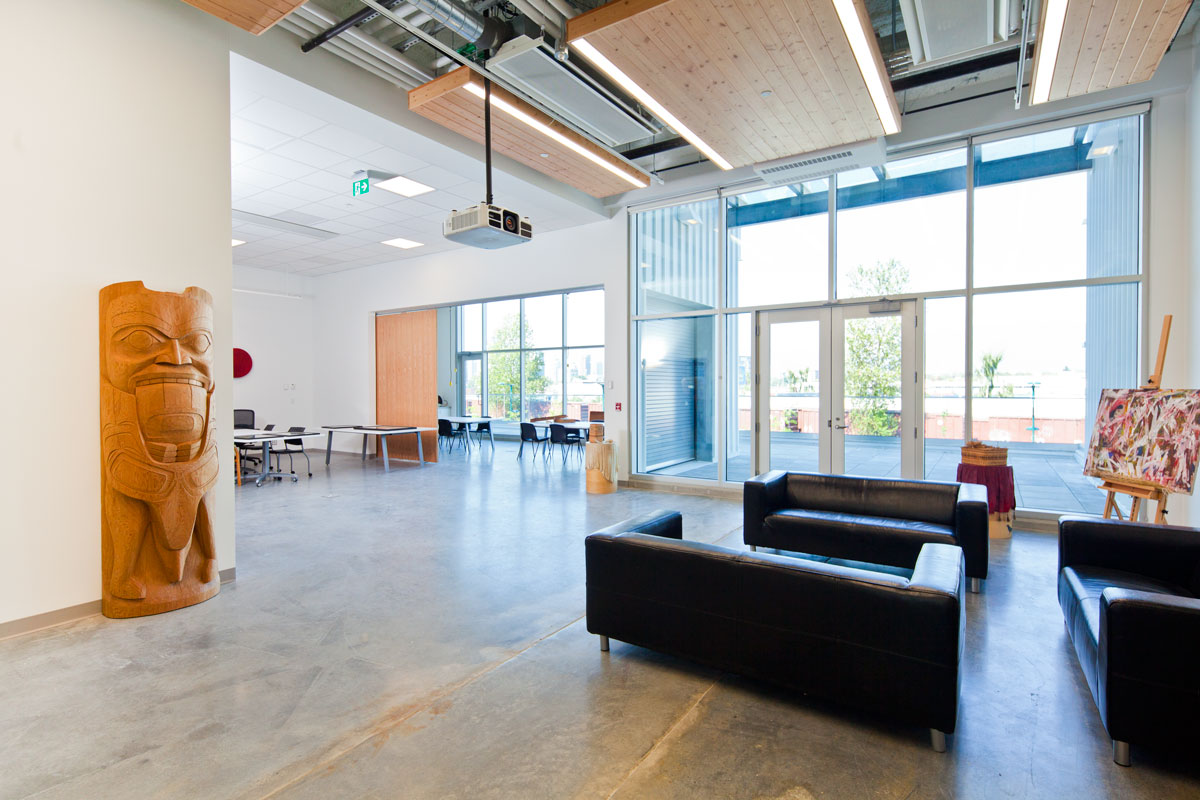 The Aboriginal Gathering Place at the new Emily Carr University of Art and Design campus.
The Aboriginal Gathering Place at the new Emily Carr University of Art and Design campus.
Still, the new campus is not without its critics. Last month the Canadian Centre for Policy Alternatives’ Policynote—in an article about the dangers of public-private partnerships, or P3s—raised an alarm about the new campus and its possible costs hidden costs to taxpayers. Said the article, a BC government-agency study of ECUAD “does show a saving of nearly $7 million for the P3 over the life of the project—however this is only because the [government’s] methodology overestimates the cost of public projects.”
(According to an ECUAD release, the new campus is a public-private partnership through Applied Arts Partners, a consortium of private companies that include Brookfield Financial, EllisDon, Fengate Capital, Diamond Schmitt Architects, Chernoff Thompson Architects and Johnson Controls. The group was selected to “finance, design, construct, operate and maintain the campus for 30 years,” says the release.)
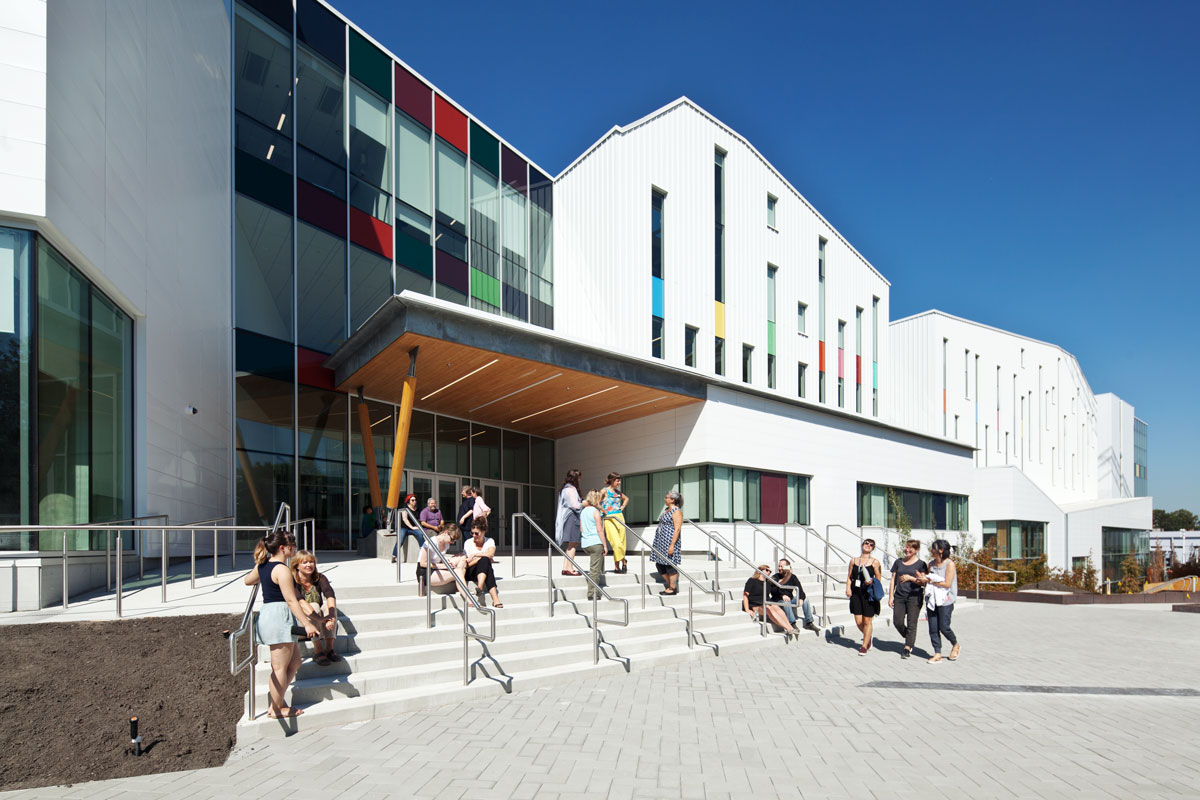 The main entrance to the new Emily Carr University of Art and Design. It is on the south side of the building.
The main entrance to the new Emily Carr University of Art and Design. It is on the south side of the building.
Some of the donors to the new campus also have their own controversial reputations. One of the main public spaces adjacent to the school is named the Chip and Shannon Wilson Arts Plaza—and Chip Wilson, founder of Lululemon, has been called out for remarks that seemed to disparage Jewish people, and Japanese people, as well.
Critics aside, Burnett says he is proud of a project that has come in, in his words, “no debt, no deficit and on time.” And it’s certainly been a long road for Burnett and the new campus, one that started when Finning International donated 18.3 acres of land to four area educational institutions (ECUAD, SFU, UBC and BCIT) in 2001.
While he is planning to step down from the president role in July 2018 and take a nine-month sabbatical before taking a different role at the school, Burnett, when asked, offers this advice for other institutions that want to pull off a similar feat: “Perseverance and vision.”
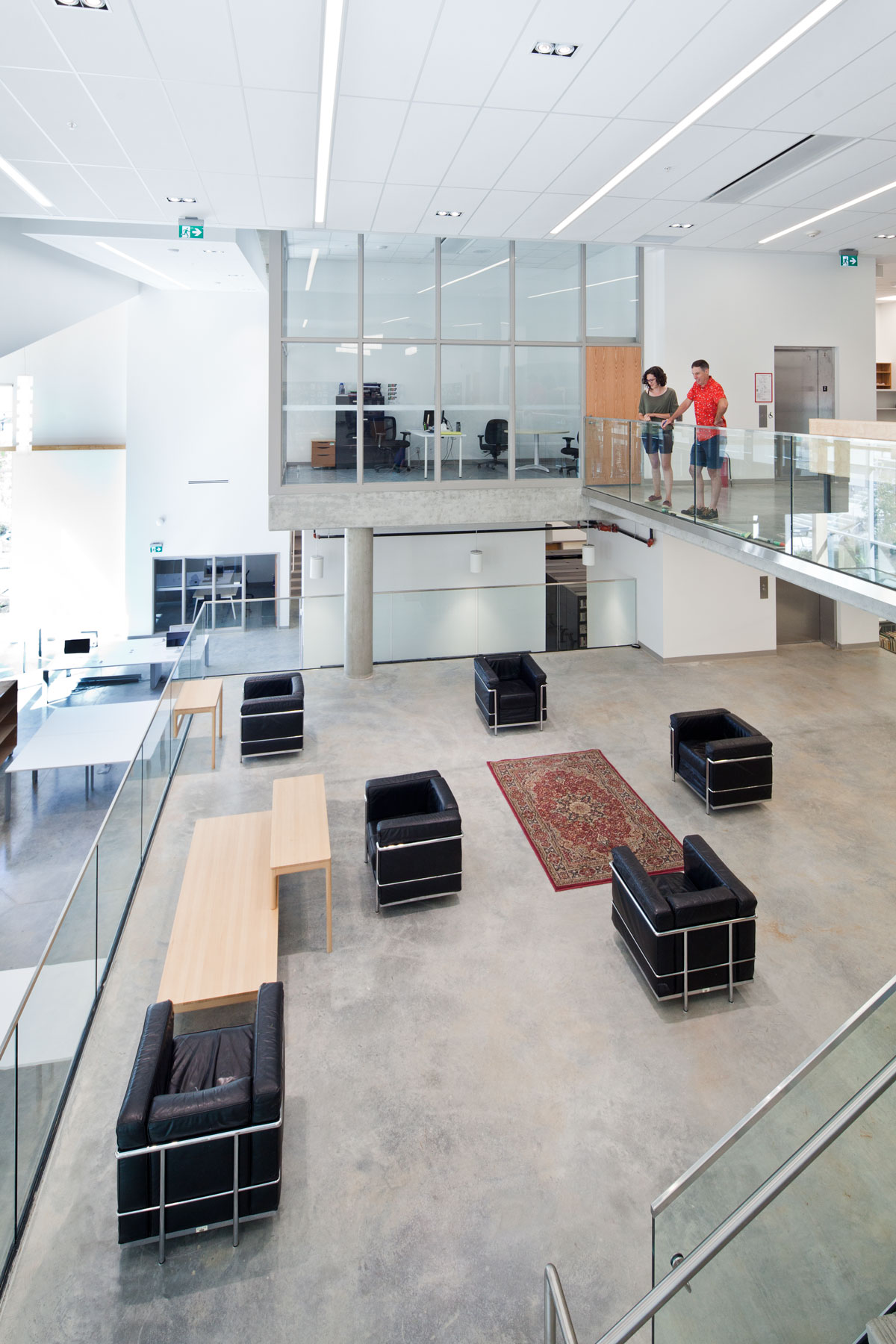 The mezzanine level of the new Ron Burnett Library + Learning Commons at the Emily Carr University of Art and Design.
The mezzanine level of the new Ron Burnett Library + Learning Commons at the Emily Carr University of Art and Design.
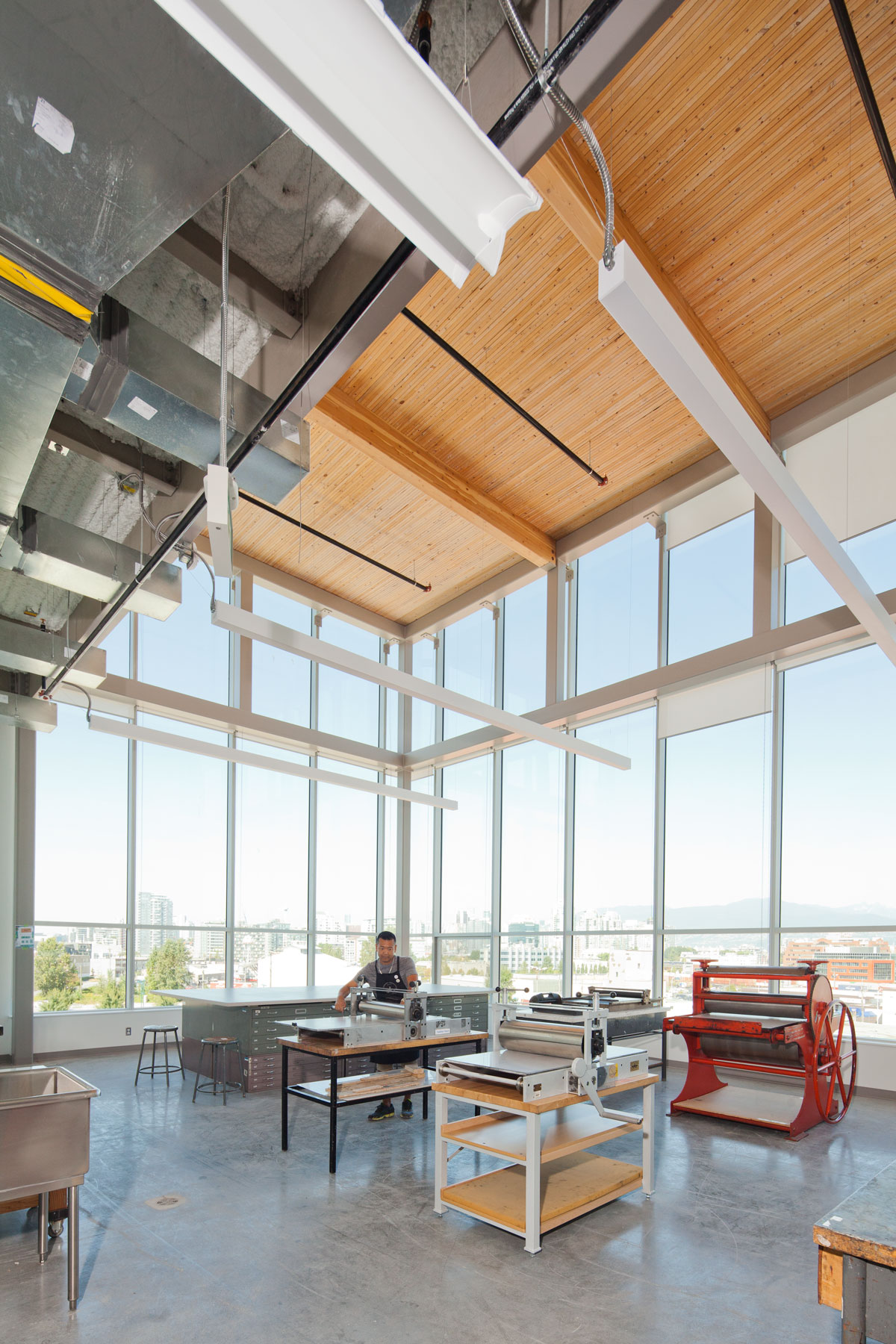 A printmaking studio at the new Emily Carr University of Art and Design.
A printmaking studio at the new Emily Carr University of Art and Design.
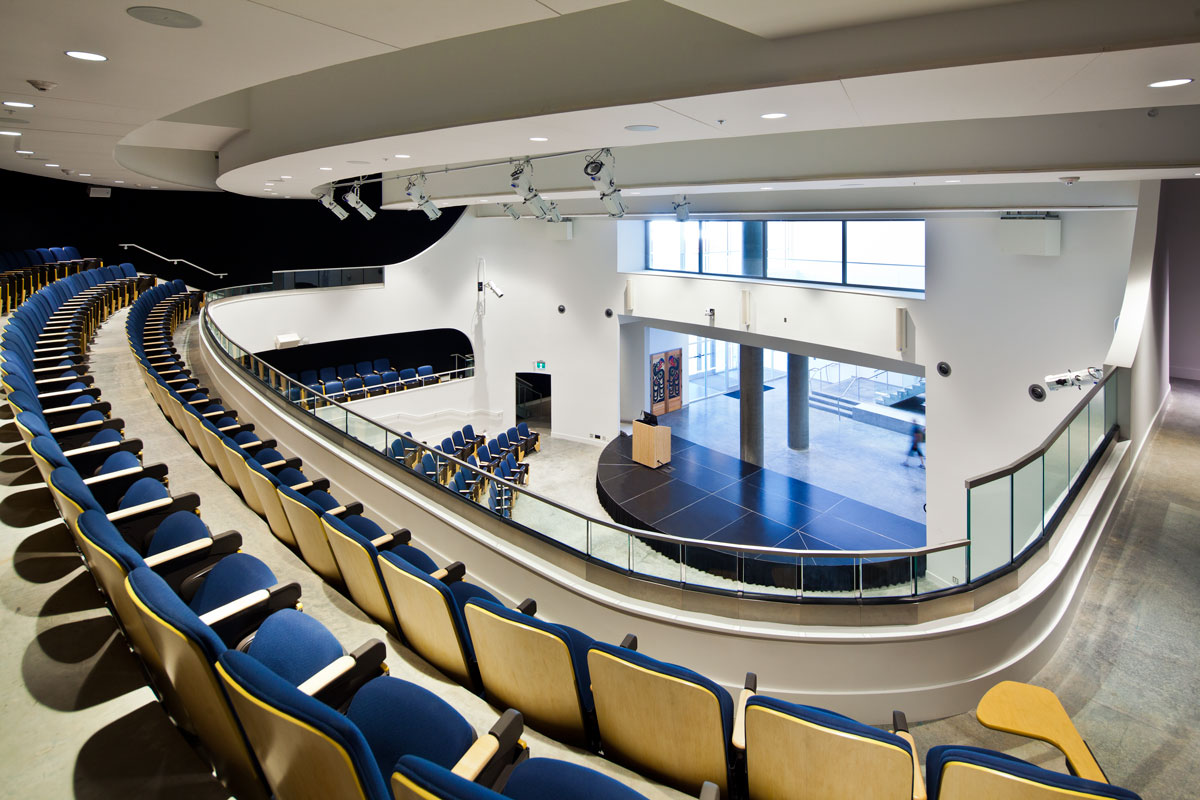 A view of the upper level of the Reliance Theatre at the new Emily Carr University of Art and Design.
A view of the upper level of the Reliance Theatre at the new Emily Carr University of Art and Design.
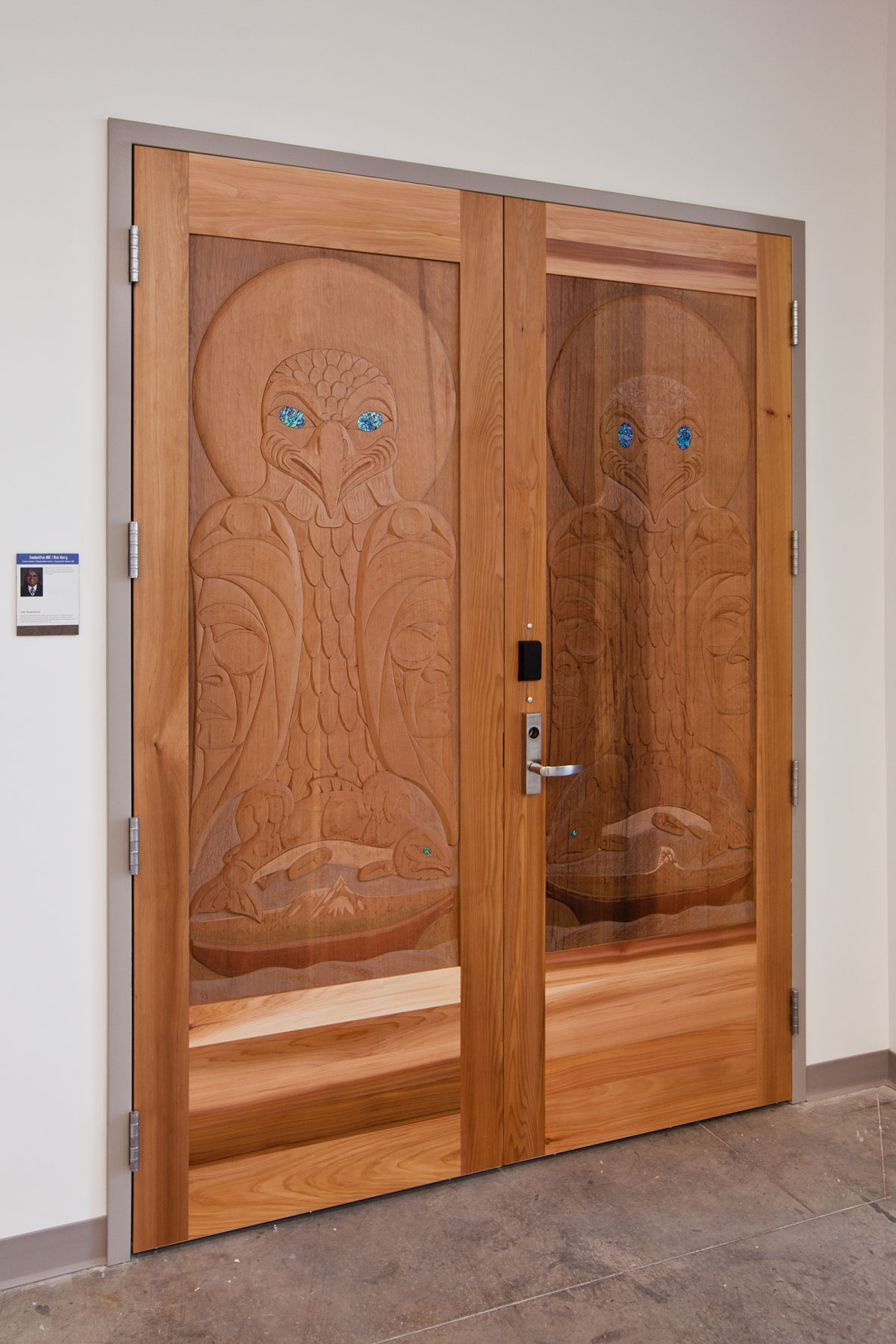 Carved doors by alumnus Xwalacktun on the southwest entrance to Emily Carr University of Art and Design’s Reliance Theatre.
Carved doors by alumnus Xwalacktun on the southwest entrance to Emily Carr University of Art and Design’s Reliance Theatre.
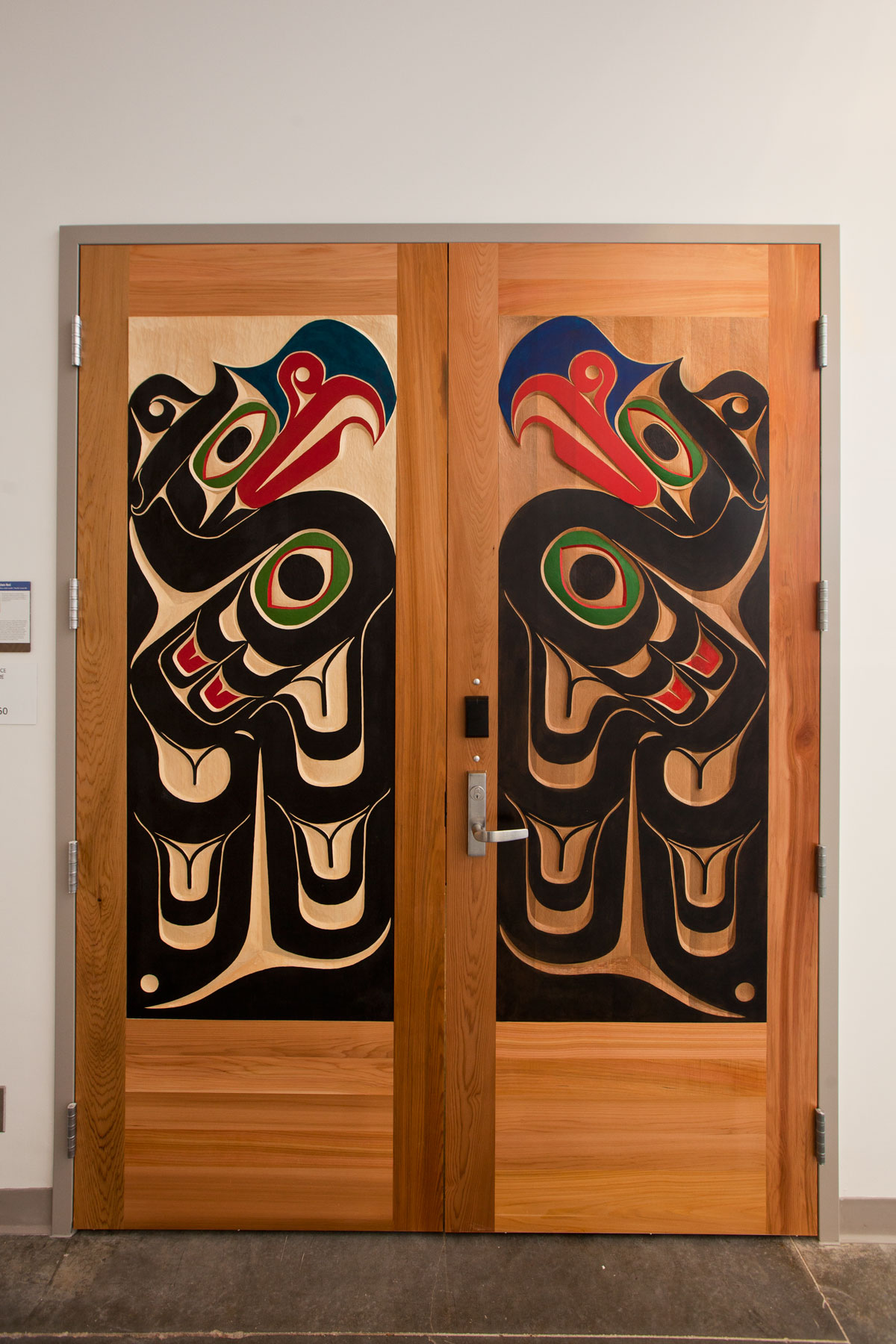 Carved doors by alumnus Edwin Neel on the northwest entrance of Emily Carr University of Art and Design’s Reliance Theatre.
Carved doors by alumnus Edwin Neel on the northwest entrance of Emily Carr University of Art and Design’s Reliance Theatre.
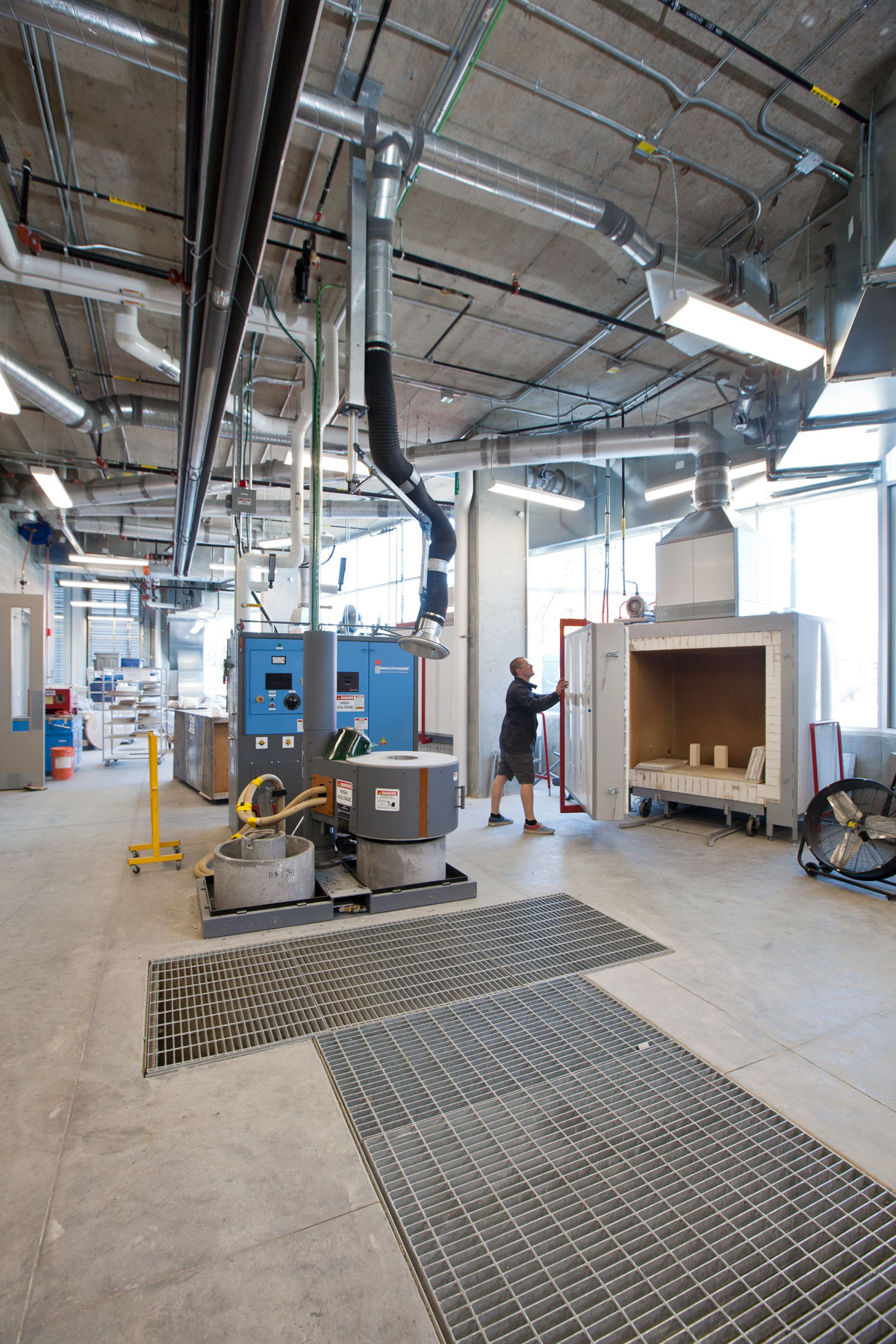 The Dobney Foundry and ceramic kilns at the new Emily Carr University of Art and Design campus.
The Dobney Foundry and ceramic kilns at the new Emily Carr University of Art and Design campus.
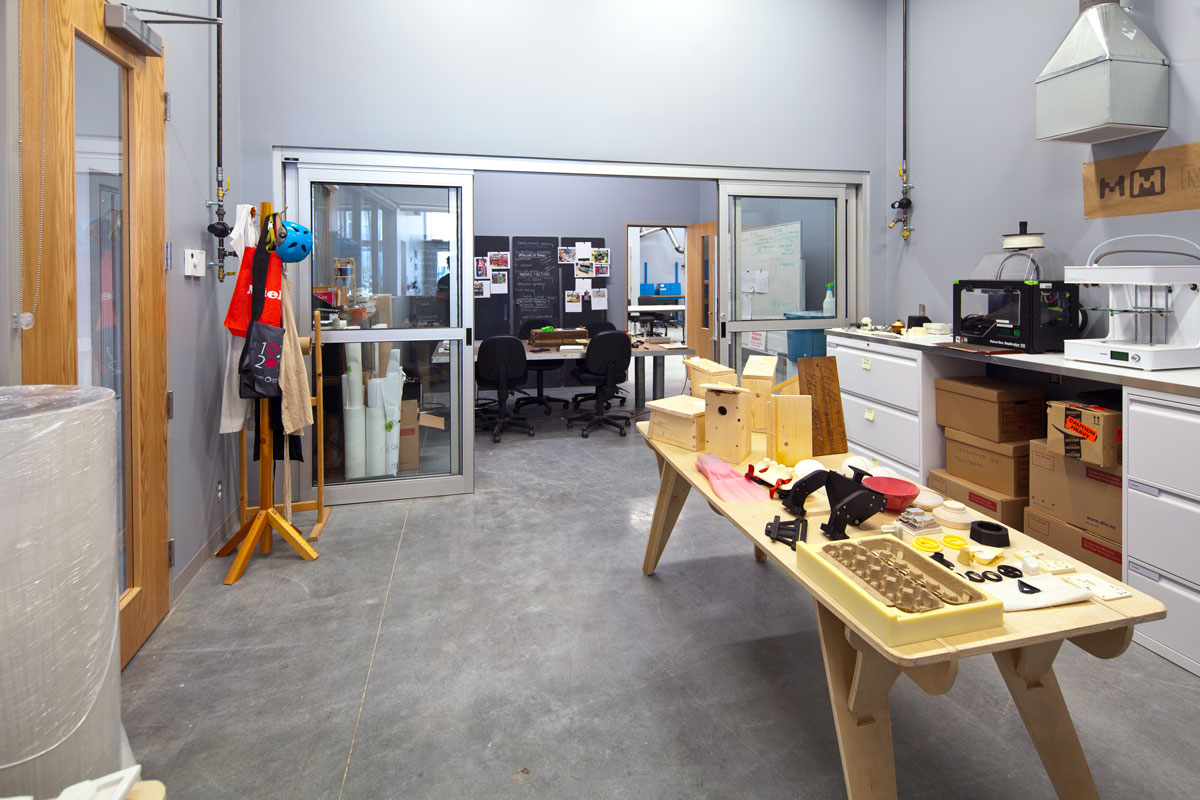 A new 3D print studio at the Emily Carr University of Art and Design, sponsored by Chayse Innovations.
A new 3D print studio at the Emily Carr University of Art and Design, sponsored by Chayse Innovations.
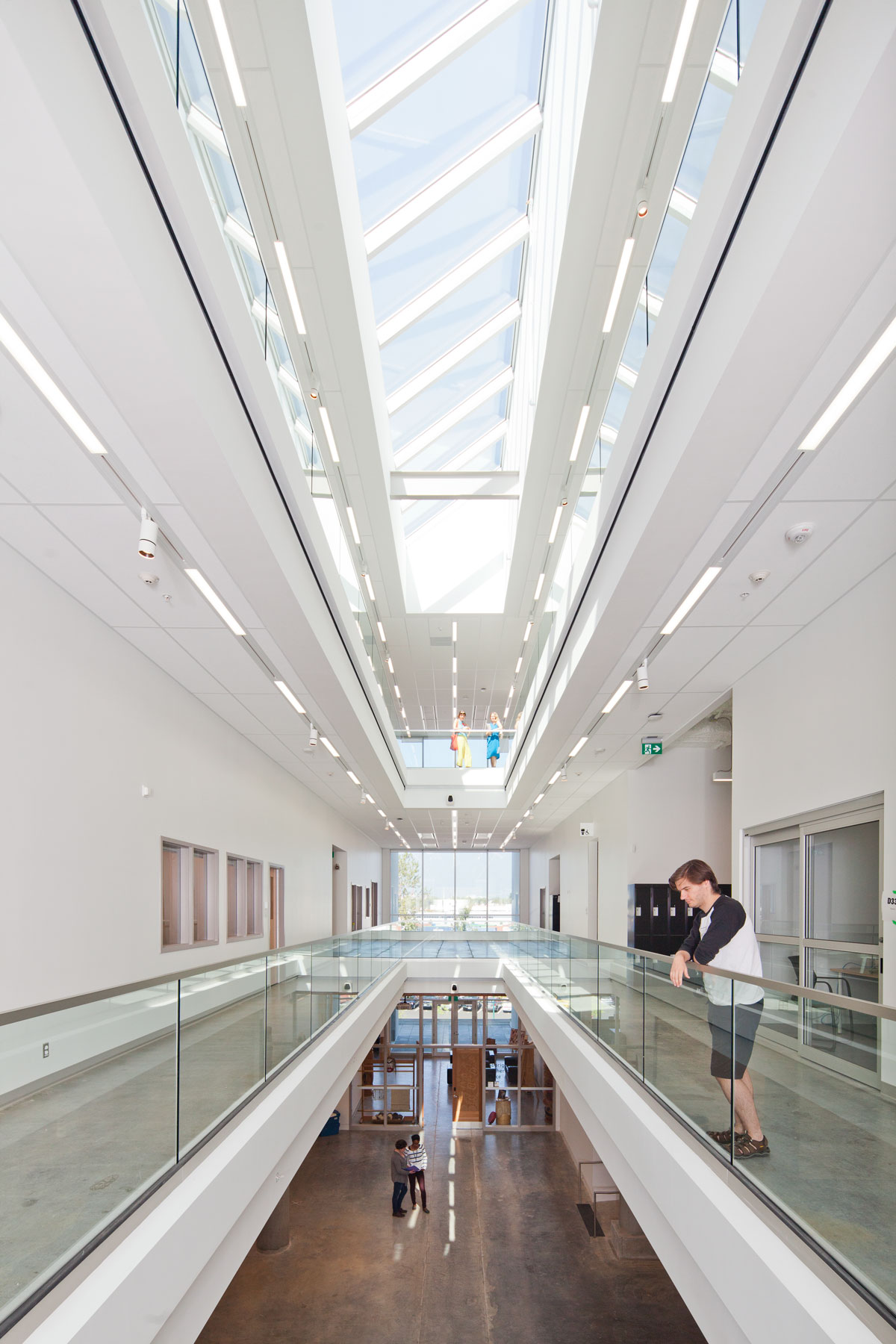 Atria at the new Emily Carr University of Art and Design campus, view from the 3rd floor looking north.
Atria at the new Emily Carr University of Art and Design campus, view from the 3rd floor looking north.
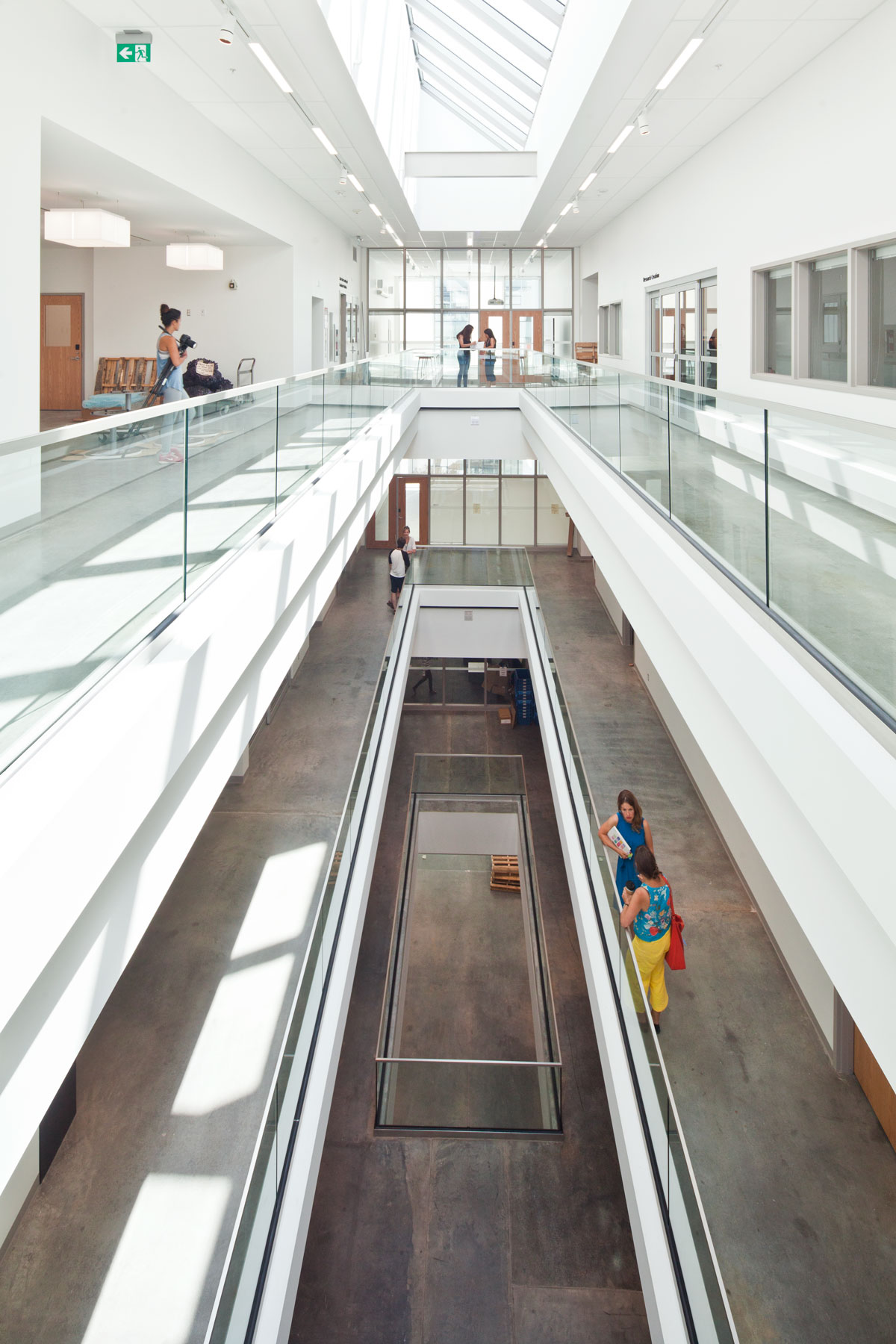 A view of the Emily Carr University of Art and Design atria, from the fourth floor looking south.
A view of the Emily Carr University of Art and Design atria, from the fourth floor looking south.
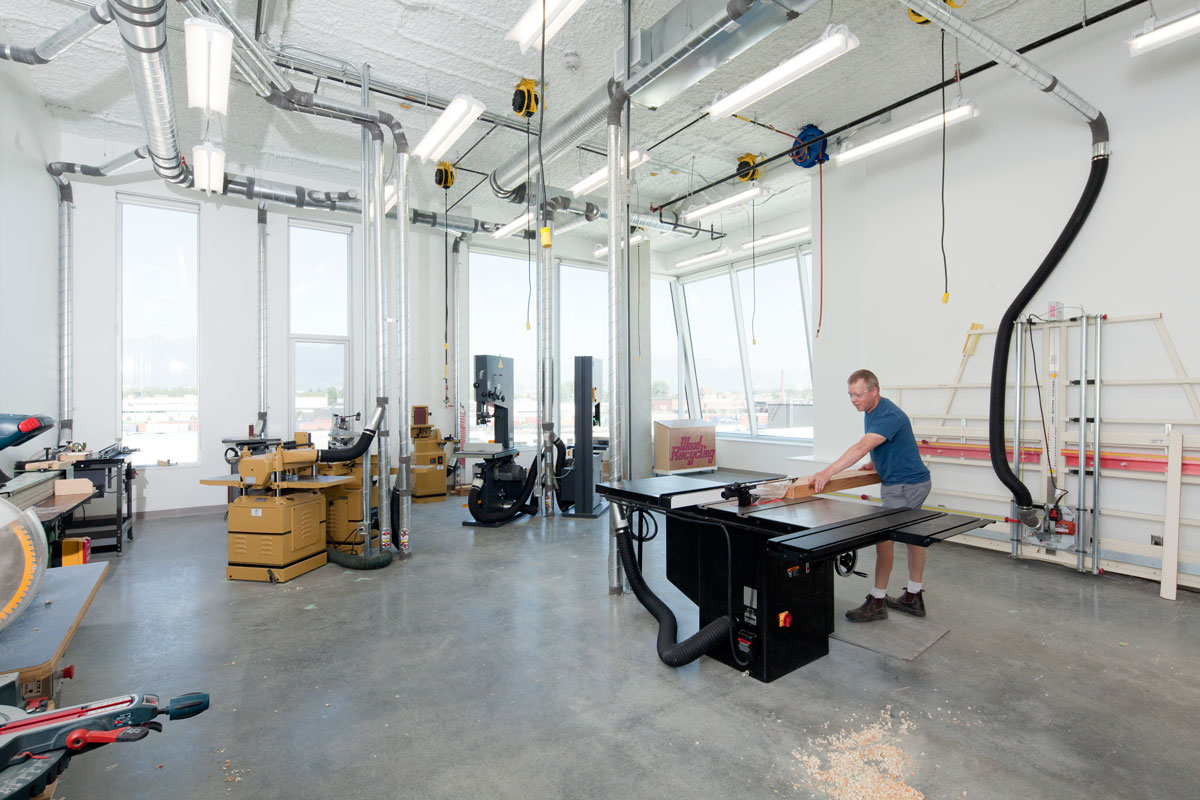 The new Foundation Woodshop at the Emily Carr University of Art and Design.
The new Foundation Woodshop at the Emily Carr University of Art and Design.
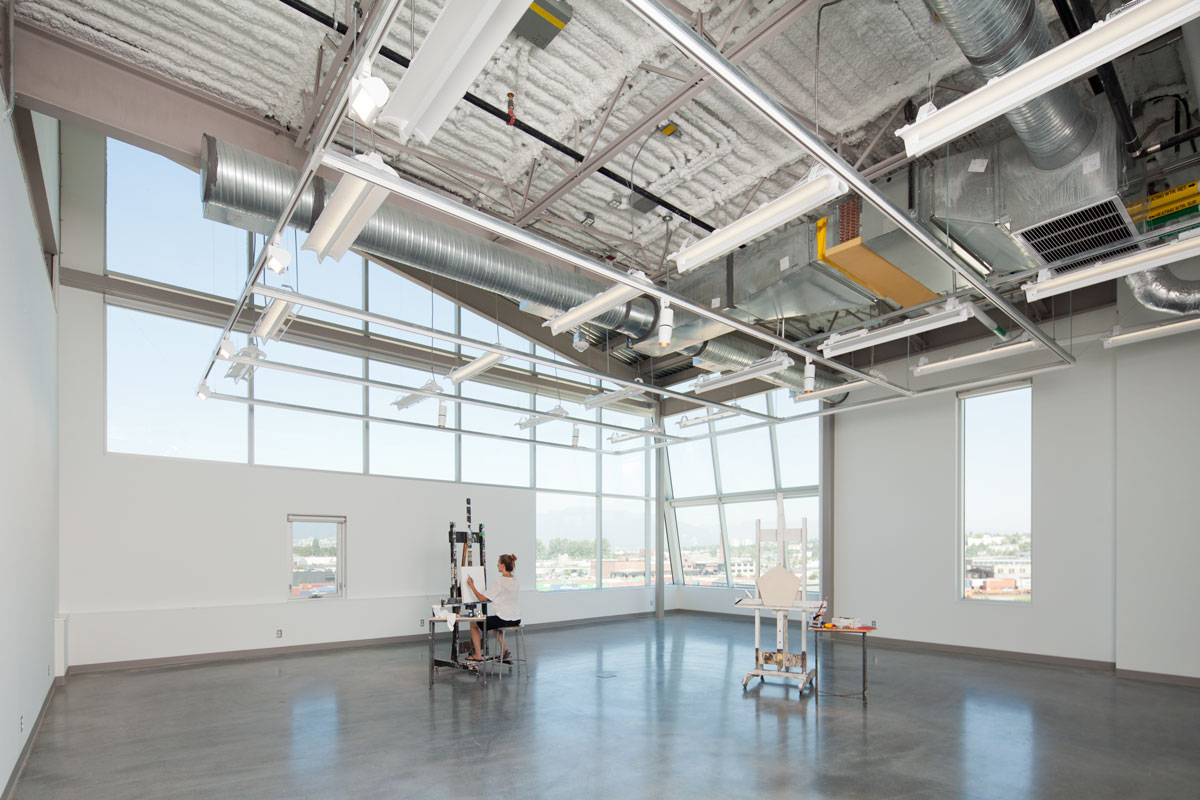 The new Gordon and Marion Smith Painting Studio at the Emily Carr University of Art and Design.
The new Gordon and Marion Smith Painting Studio at the Emily Carr University of Art and Design.
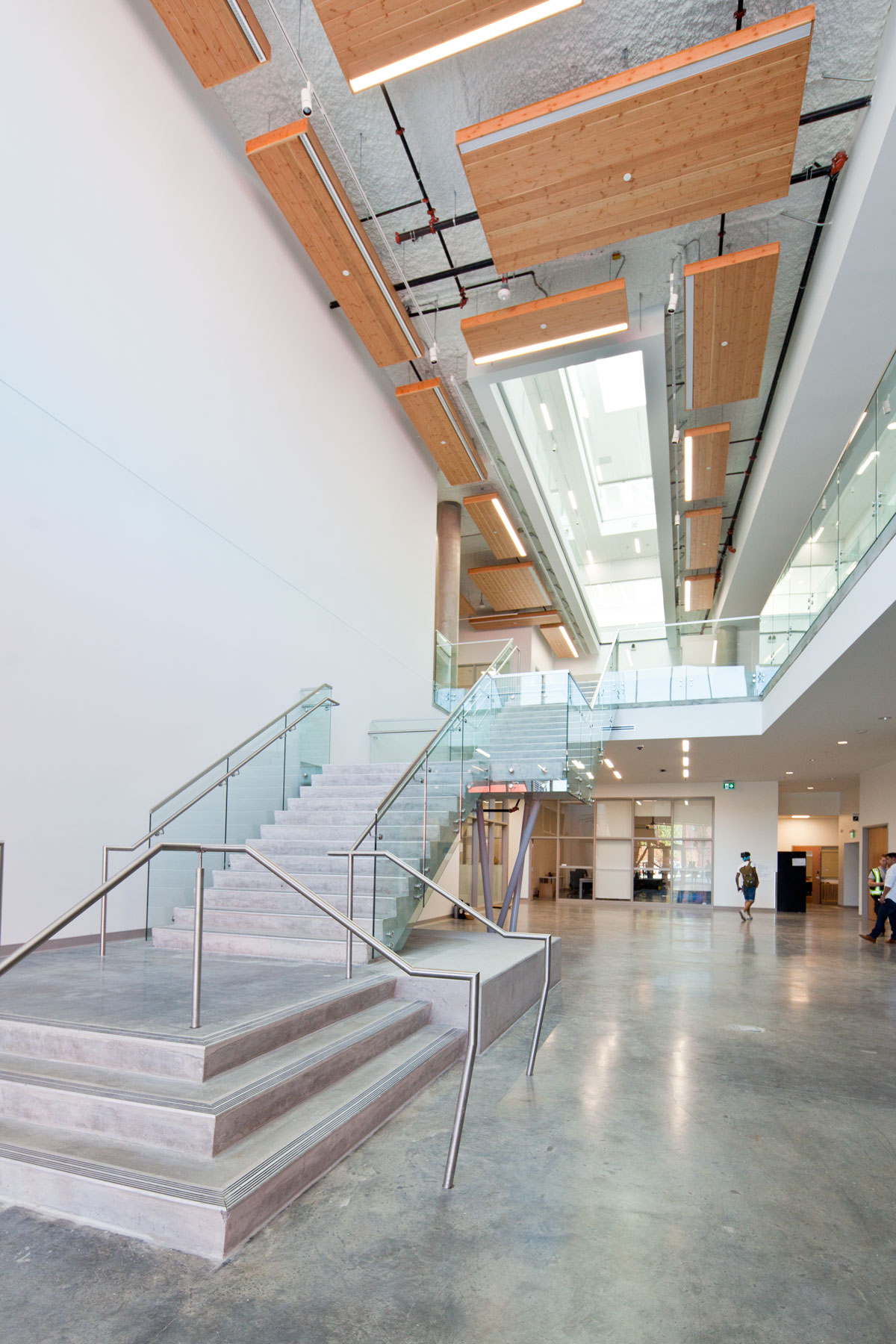 The northwest entrance hall/stairway at the Emily Carr University of Art and Design, with wood feature.
The northwest entrance hall/stairway at the Emily Carr University of Art and Design, with wood feature.
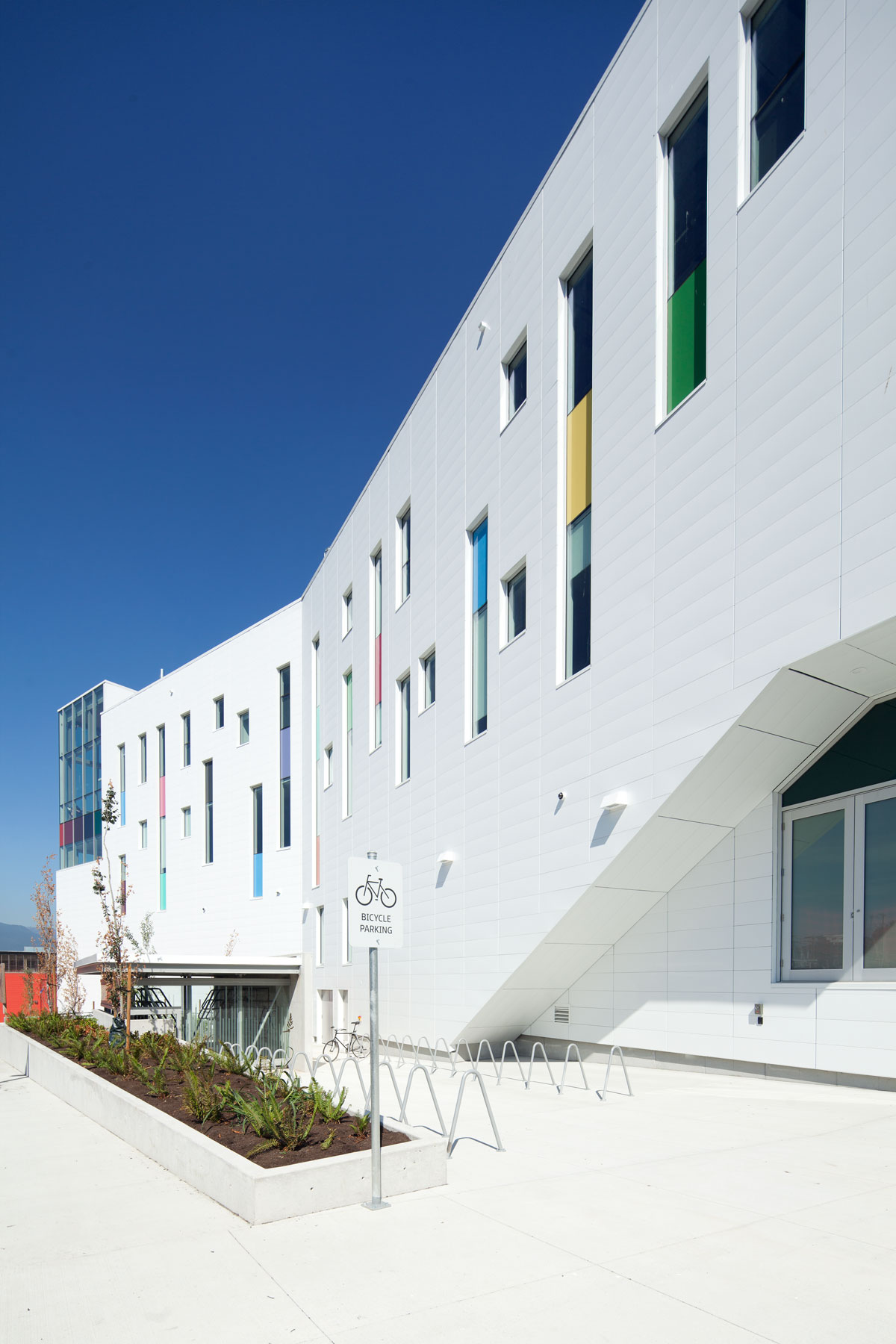 West building façade of the new Emily Carr University of Art and Design campus, with bike cage and bike racks.
West building façade of the new Emily Carr University of Art and Design campus, with bike cage and bike racks.

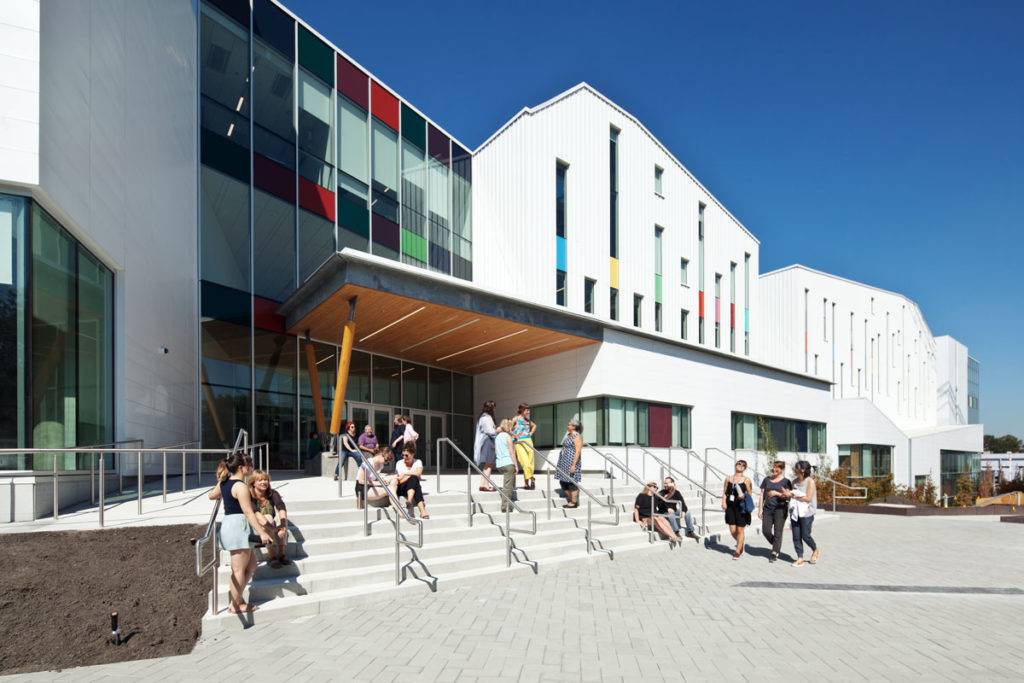 The main entrance to the new Emily Carr University of Art and Design at 520 East 1st Ave. in Vancouver.
The main entrance to the new Emily Carr University of Art and Design at 520 East 1st Ave. in Vancouver.
